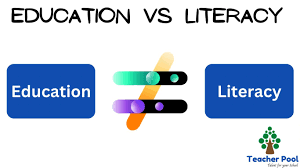Are you tired of the lead generation struggle? Does the thought of attracting new customers feel like climbing Mount Everest? In today’s cutthroat market, a steady stream of quality leads is not a luxury; it’s the oxygen that keeps your business alive and thriving.
Ready to breathe new life into your lead generation strategy and see your sales pipeline explode with potential? Let’s dive into ten powerful, proven marketing ideas that will revolutionize your approach!
1. Content Marketing: The King of Lead Generation

Establish Yourself as an Industry Leader.
Content marketing involves creating and sharing valuable, relevant, and consistent content to attract and engage a specific audience, with the goal of converting them into customers. Content is the cornerstone of inbound marketing. According to the Content Marketing Institute, businesses that use content marketing experience conversion rates that are six times higher than those that don’t.
- Create High-Quality Blog Posts: Address your audience’s pain points, offer solutions, and establish yourself as a trusted resource.
- Produce Engaging Videos: Video content is highly engaging and can significantly increase brand awareness and lead generation.
- Design Downloadable Resources: Offer valuable ebooks, whitepapers, checklists, templates, or other freebies in exchange for contact information.
Expert Insight:
“Content marketing is no longer a luxury, it is a necessity for any business that wants to thrive in the digital age,” says Neil Patel, a renowned marketing expert and co-founder of Neil Patel Digital.
Recent Trends and Statistics:
- Video Dominance: Cisco forecasts that video will account for 82% of all internet traffic by 2022, underlining the importance of video content. (Source: Cisco)
- Blog Posting Frequency: HubSpot research reveals that companies that publish blog posts regularly generate more leads. (Source: HubSpot)
2. Search Engine Optimization (SEO): Get Found Online
Boost Your Website’s Visibility.
SEO is the process of optimizing your website to rank higher in search engine results, increasing your visibility to potential customers. SEO is crucial for long-term organic growth. BrightEdge reports that organic search accounts for more than 50% of all website traffic.
- Keyword Research: Identify the terms and phrases your target audience uses when searching for information, products, or services related to your business.
- On-Page Optimization: Optimize your website’s content, title tags, meta descriptions, header tags, image alt tags, and internal linking.
- Off-Page Optimization: Build high-quality backlinks from reputable websites to increase your website’s authority and ranking.
Expert Insight:
“SEO is not just about ranking. It’s about providing the best possible user experience,” says Rand Fishkin, the founder of SparkToro and a leading SEO expert.
Recent Trends and Statistics:
- Click-Through Rate: The first organic search result gets an average of 31.7% of all clicks. (Source: Backlinko)
- Mobile Optimization: Ensure your website is mobile-friendly, as mobile searches continue to rise.
3. Social Media Marketing: Engage and Convert

Social media platforms offer powerful tools for connecting with your target audience, building brand awareness, and driving leads. Social media provides unparalleled access to potential customers. Hootsuite reports that 91% of marketers use social media to increase brand awareness.
- Choose the Right Platforms: Focus on the social media platforms where your target audience is most active.
- Post Engaging Content Regularly: Share valuable content, run contests, and interact with your followers to build relationships.
- Use Targeted Advertising: Leverage social media advertising to reach specific demographics and interests.
Expert Insight:
“Social media is about building relationships, not just broadcasting messages,” says Gary Vaynerchuk, a prominent social media expert.
Trends and Statistics:
- Video-First Platforms: TikTok, Instagram Reels, and other video-focused platforms are experiencing massive growth.
- Live Video: Live videos offer real-time engagement and audience interaction.
4. Email Marketing: Nurture and Convert
Email marketing remains one of the most effective ways to nurture leads and convert them into customers. Email marketing continues to deliver a high return on investment. The Direct Marketing Association (DMA) found that email marketing generates an average return of $36 for every $1 spent.
- Build an Email List: Offer valuable incentives, such as free resources or exclusive discounts, to encourage people to subscribe.
- Segment Your Audience: Divide your email list into segments based on interests, demographics, or behavior.
- Create Targeted Email Campaigns: Develop email campaigns that provide value, share relevant information, and offer personalized promotions.
Expert Insight:
“Email is the workhorse of digital marketing, providing a direct line of communication with your audience,” emphasizes Ann Handley, author of “Everybody Writes.”
Important Statistics to Consider:
- Email Segmentation Results: Segmented email campaigns generate 760% more revenue than non-segmented campaigns, according to Campaign Monitor.
- Welcome Emails: Welcome emails have the highest open rates and provide an excellent opportunity to make a good first impression.
5. Paid Advertising (PPC): Get Immediate Results
Drive Targeted Traffic Quickly.
Pay-per-click (PPC) advertising, such as Google Ads and social media ads, allows you to reach your target audience quickly and efficiently. PPC offers immediate visibility and control. WordStream reports that businesses make an average of $2 for every $1 spent on Google Ads.
- Set Up Targeted Campaigns: Create campaigns that focus on specific keywords, demographics, and interests.
- Use Compelling Ad Copy: Write ad copy that grabs attention and encourages clicks.
- Optimize Landing Pages: Ensure your landing pages are optimized for conversions, with clear calls to action and compelling offers.
Expert Insight:
“PPC is about continuous testing and optimization to improve your results,” advises Brad Geddes, a Google Ads expert.
Essential Statistics
- Conversion Rates: Carefully track and analyze your conversion rates to optimize your campaigns.
- Mobile Advertising: Optimize your campaigns for mobile devices, as mobile search continues to dominate.
6. Webinars and Online Events
Position Yourself as an Expert.
Webinars and online events are excellent tools for showcasing your expertise, engaging with your audience, and generating high-quality leads. Webinars establish credibility and foster deeper engagement. According to GoToWebinar, webinars generate a lead-to-customer conversion rate of 40%-50%.
- Host Informative Webinars: Focus on topics that provide value and address your audience’s needs.
- Promote Your Events: Utilize email marketing, social media, and other channels to promote your webinars.
- Engage with Attendees: Encourage questions, polls, and interaction during the webinar.
Expert Insight:
“Webinars are a powerful way to connect with your audience on a personal level and establish yourself as a thought leader,” says Michael Port, a marketing expert.
Key Statistics:
- B2B Preference: 75% of B2B marketers use webinars as a lead generation tool, according to ON24.
- Engagement Rates: High-quality content increases attendance and audience engagement.
7. Lead Magnets: Offer Irresistible Value
Attract and Entice.
Lead magnets are valuable incentives you offer to website visitors in exchange for their contact information. Lead magnets are a highly effective method for capturing leads. HubSpot reports that a well-designed lead magnet can increase conversion rates by up to 50%.
- Create Valuable Offers: Develop resources like ebooks, templates, checklists, free trials, or discount codes.
- Optimize Landing Pages: Design dedicated landing pages that highlight the value of your lead magnet.
- Promote Your Lead Magnets: Promote your lead magnets across your website, social media, email campaigns, and paid advertising efforts.
Expert Insight:
“The best lead magnets solve a specific problem for your target audience,” advises Bryan Harris, a marketing expert.
Key Metrics to Track:
- Conversion Rate Optimization: Continuously test and optimize your lead magnet landing pages to maximize conversion rates.
- Lead Quality: Focus on creating lead magnets that attract your ideal customer profile (ICP).
8. Partnerships and Collaborations: Expand Your Reach
Partnering with other businesses or influencers can expand your reach and introduce you to new audiences. Strategic partnerships create win-win opportunities. Influencer Marketing Hub states that influencer marketing can yield an ROI of $5.20 for every dollar spent.
- Identify Strategic Partners: Seek out businesses or influencers that align with your target audience and share your values.
- Co-create Content: Collaborate on blog posts, webinars, podcasts, or other content that benefits both audiences.
- Cross-Promote: Promote each other’s products, services, or offers to leverage mutual benefits.
Expert Insight:
“Partnerships amplify your reach and credibility, helping you to tap into new markets,” says Jay Baer, a marketing expert and author.
Data to Keep in Mind:
- Influencer Marketing Results: Influencer marketing continues to prove effective in increasing brand awareness and lead generation.
- Cross-Promotional Benefits: Cross-promotions can significantly improve brand visibility.
9: Advocate Programs: Turn Customers into Advocates
Referral programs incentivize your existing customers to refer new leads, generating leads through trusted recommendations. Referral programs utilize the power of existing customer relationships. Research shows that referred customers have a 16% higher lifetime value.
- Offer Attractive Incentives: Provide rewards like discounts, free products, or cash bonuses.
- Make Referrals Easy: Simplify the referral process.
- Promote Your Program: Highlight your referral program via website, email, and social media.
Expert Insight:
“Referrals are the most trusted form of marketing,” says Jonah Berger, a marketing expert and author of “Contagious.”
Considerations for Your Program
- Program Design: A well-designed referral program is user-friendly and delivers clear value.
- Tracking and Management: Use tools to effectively track and manage your program.
10. Offline Marketing: The Power of the Physical World
Integrate Online and Offline Strategies.
While digital marketing dominates, offline marketing still offers valuable opportunities. Combine online and offline tactics for maximum impact. The U.S. Chamber of Commerce found that 77% of consumers remember seeing a print ad.
- Attend Industry Events: Network and exhibit at trade shows.
- Distribute Print Materials: Use brochures, flyers, and business cards.
- Sponsor Local Events: Participate in local events for brand awareness and community engagement.
Expert Insight:
“Marketing is about being where your customers are, both online and offline,” says Seth Godin, a marketing guru and author.
Data to Support your Efforts:
- Integrated Campaigns: Studies show integrated campaigns perform better than single-channel efforts.
- Brand Recognition: Effective offline marketing strengthens brand recognition.
Implementing these ten marketing ideas can revolutionize your lead generation and drive business growth. Embrace a multi-channel approach and stay ahead of the trends.
Now that you have this valuable information, are you ready to transform your business, capture more leads, and fuel your success?
FAQs
Q1. What are the most important lead generation strategies for a new business?
A: For startups, prioritizing content marketing, SEO, and social media marketing can provide a strong foundation for building brand awareness, attracting leads, and establishing authority.
Q2. How can I measure the ROI of content marketing?
A: Key metrics to measure the ROI of content marketing include website traffic, leads generated, conversion rates, and sales revenue. Utilize analytics tools like Google Analytics to track these metrics.
Q3. What are some common pitfalls to avoid when starting content marketing?
A: Avoid creating low-quality, unoriginal content, neglecting SEO, and notpromoting your content effectively. Be consistent and patient.
Q4. What tools can help with email marketing?
A: Popular email marketing tools include Mailchimp, Constant Contact, ActiveCampaign, and ConvertKit. These tools help automate email campaigns, segment audiences, and track results.
Q5. How can I track the ROI of paid advertising?
A: Track metrics like click-through rates (CTR), conversion rates, cost per acquisition (CPA), and return on ad spend (ROAS). Use the analytics features of your advertising platforms, such as Google Ads or Facebook Ads Manager.









eams5m